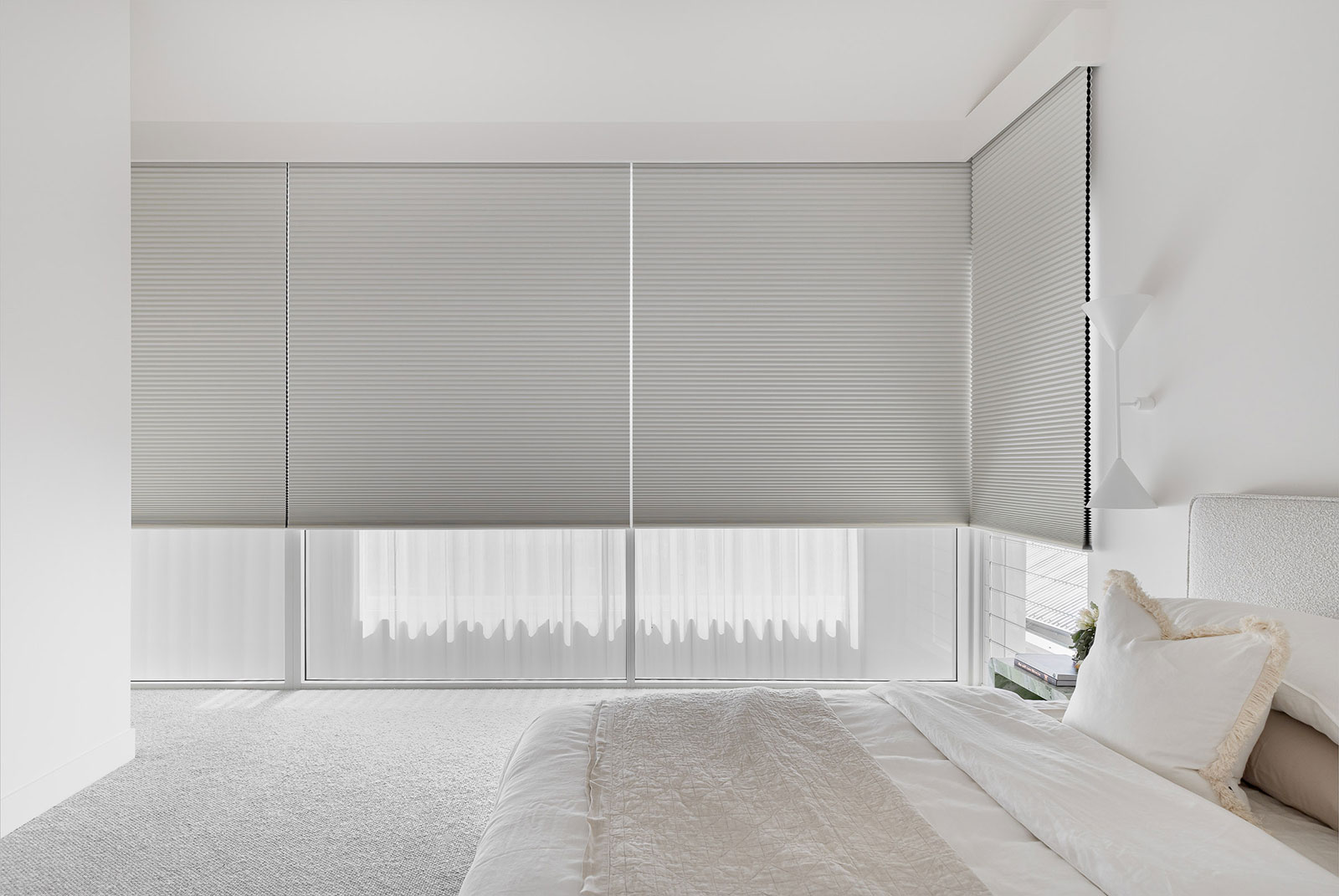119A Bentinck Street Bathurst, NSW, 2795
Lighting has the power to make or break a space—not just in how it looks, but in how it feels and functions. The right balance of natural and artificial light can transform a room, making it warm and inviting or bright and energetic. Window furnishings, like blinds and curtains, play a critical role in this. They do more than just add a decorative touch, control brightness, maintain privacy, enhance energy efficiency, and even add a sense of drama or softness to a space.
We’ve all walked into a room that felt too bright and sterile or, conversely, too dark and unwelcoming. The key to getting it right lies in thoughtful planning. Everyone that walks through Project Alma talks about the stunning natural light filtering through the large windows and how we made that all possible. The key word here is planning. We worked together with the Luxaflex team to really make these window coverings a feature of the home.
Here are some valuable insights on what homeowners should consider when planning their window furnishings—from budgeting and lighting to sustainability and automation. Here’s what we learned.
Why You Should Involve a Window Furnishings Expert Early
Many people treat blinds and curtains as the final touch in a home, often allocating little to no budget for them at the end of a build or renovation. But as Evan explains, bringing in a window furnishings consultant early can save you money, time, and unnecessary stress down the line.
Window furnishings impact much more than aesthetics—they affect privacy, insulation, and even the functionality of a space. The best time to engage an expert is while you’re still finalizing floor plans and structural elements. Waiting too long can limit your options. For instance, some blinds and curtains require additional ceiling or wall space for tracks or motorized systems, and it’s much easier to plan for these before the plaster goes up.
How Much Should You Budget?
One of the most common questions about window furnishings is: how much should you spend?
A good rule of thumb is to set aside 2-5% of your total build cost for blinds and curtains, depending on the size of your home and the type of materials you choose. Fabrics often make up 60-70% of the total cost, so your material selection has a big impact on your budget. That said, even if you’re working with a tighter budget, there are plenty of beautiful and affordable options available. Don’t forget to factor in installation costs, as these can also add up.
Lighting & Space Considerations for Window Furnishings
Choosing the right window furnishings isn’t just about selecting fabrics—it’s about how they interact with the lighting in your home. One key factor to consider is how much space curtains take up when they’re drawn back. Curtains typically require about 30% of their total width for stacking when open. For example, if your curtain is 10 meters wide, you’ll need about 3 meters of wall space to accommodate it when fully drawn. If you don’t plan for this, your curtains could end up covering part of the window even when open, reducing natural light and obstructing views.
For larger windows or sliding doors, recessed tracks or built-in joinery can be a game-changer. These allow curtains to be neatly tucked away, maintaining a clean and modern look.
High-End Design Features to Consider
If you’re aiming for a luxurious, high-end look, consider incorporating:
✔ Built-in pelmet cavities – These hide curtain tracks, creating the effect of curtains seamlessly flowing from the ceiling.
✔ Layered fabrics – Combining sheer and blockout layers allows for greater control over light and privacy.
✔ Motorized blinds and curtains – These add convenience and can be integrated with smart home systems for automation.
The catch? These features need to be planned at the frame stage so they can be roughed in before plastering. Adding them later can be costly and complicated.
Sustainability in Window Furnishings: A Growing Trend
As more homeowners prioritize eco-conscious living, sustainability is becoming a major consideration in window furnishings.
A great example is the Duette blind from Luxaflex, which is designed to help regulate indoor temperatures. Blinds and curtains play a crucial role in keeping homes cool in summer and warm in winter, reducing reliance on artificial heating and cooling.
Motorized blinds can enhance energy efficiency even further. They can be programmed to close automatically during the hottest part of the day, keeping interiors cooler and reducing air conditioning use.
The Bottom Line: Don’t Leave Window Furnishings as an Afterthought
Every home and family is unique, so window furnishings should be tailored to your specific needs. Whether you have a large budget or a more modest one, the key is planning ahead.
By engaging a consultant early, you’ll have more options, avoid last-minute compromises, and create a space that looks and feels just right. So next time you’re planning a new build or renovation, don’t push window furnishings to the bottom of the list—think ahead, get expert advice, and bring your vision to life beautifully.




